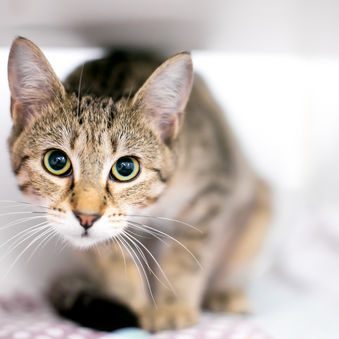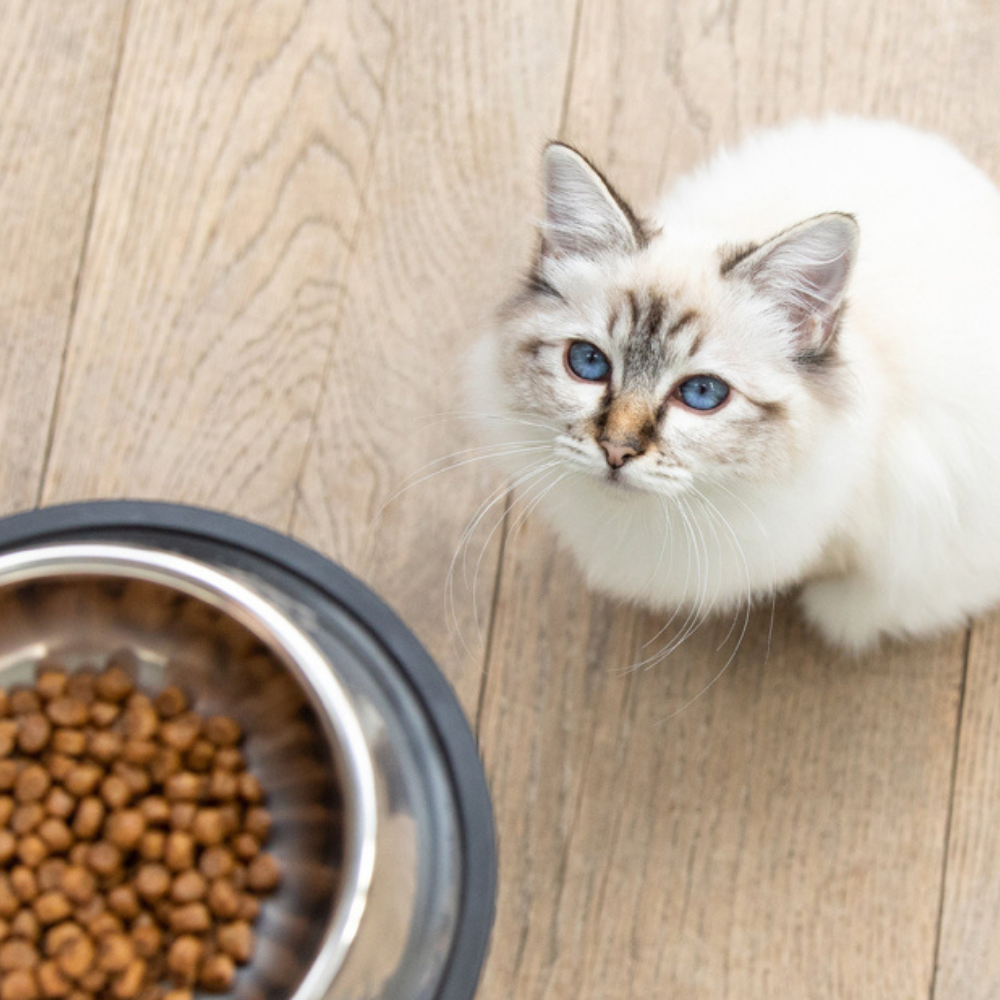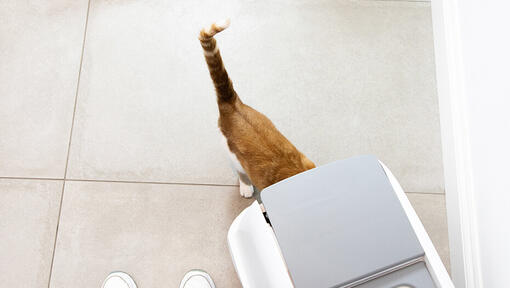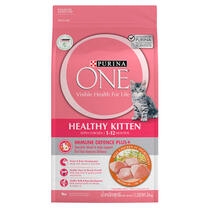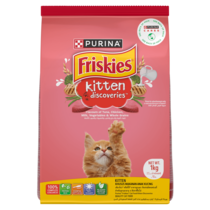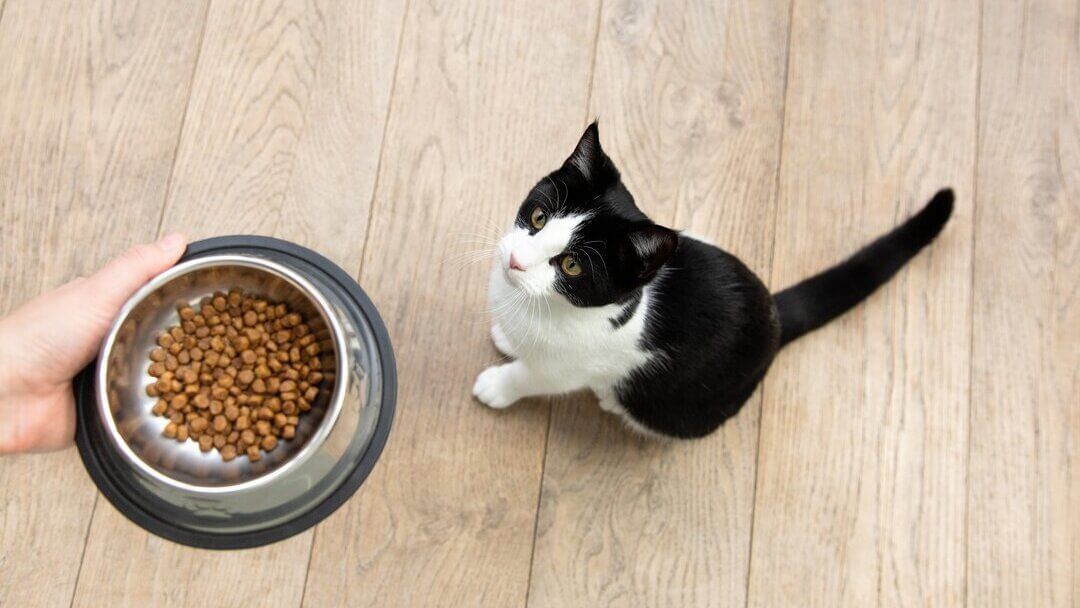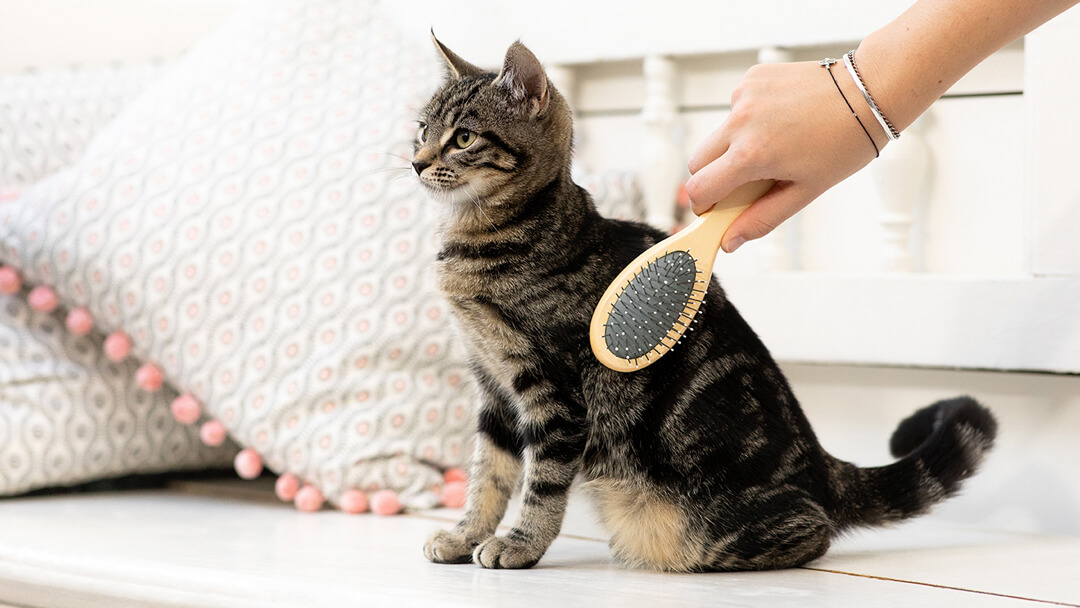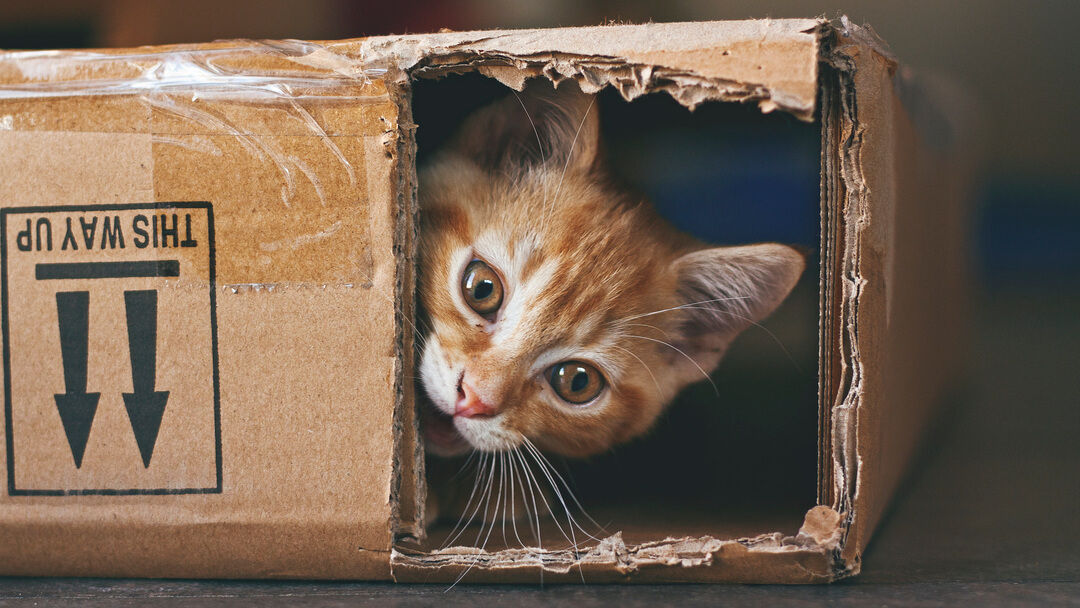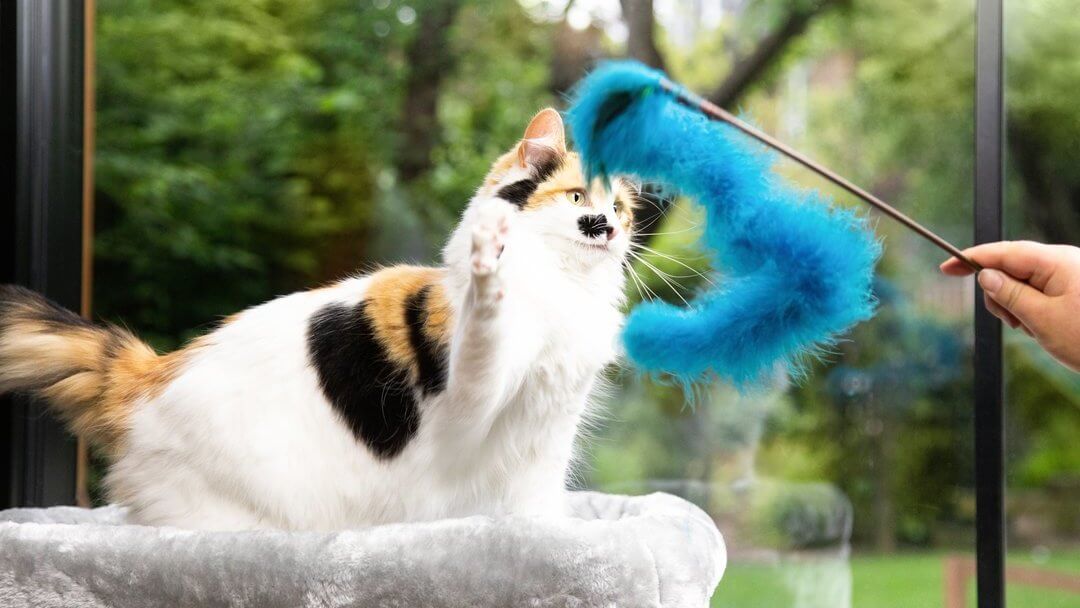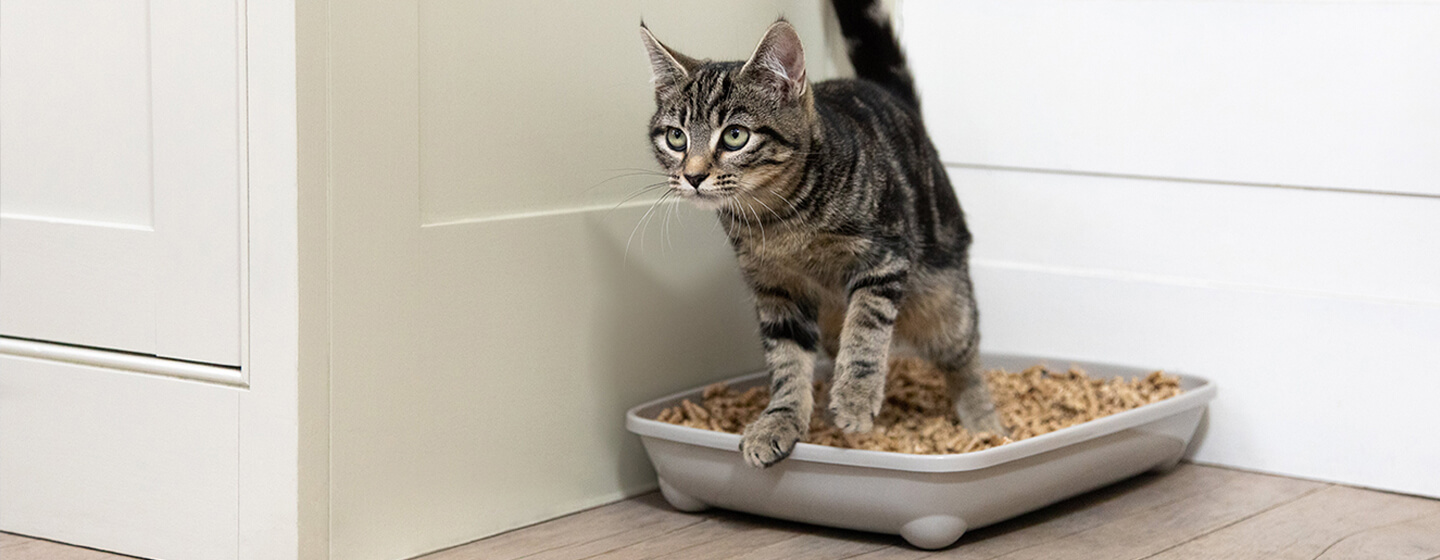
If you have an indoor cat or one with limited access to outside, a litter tray is essential. Litter training kittens and cats is relatively simple and with this helpful guide your furry friend will be using the tray confidently in no time!
Your cat’s natural instincts will usually find them wanting to go to the toilet outside, but many cats like to have a litter tray indoors too. It’s usually best to start with cat toilet training from a young age, but older cats can still be taught to use a litter tray. In fact, they may even find it beneficial as their joints are stiffer and they lack the same energy to go outside.
If you’re new to litter training kittens or cats, you may be wondering where to start. That’s why we created this guide to tell you everything you need to know, from what you’ll need to get started to how to get your new kitten accustomed to using the tray.
Getting the perfect cat litter tray
If you’re just starting out litter training kittens, ensure you use a low-sided plastic tray at first for easy access. When they’ve grown a bit, you’ll want to swap to a larger and deeper tray to give them enough room to turn around and prevent kicking up and scattering the litter all over your home.
If you want to minimise odours and spillage while also giving your adult cat more privacy during toilet time, a covered tray could be more suitable. Most will enjoy the extra secrecy when doing their business, but some cats may be nervous about the enclosed space due to the fact that they only have one exit point if a threat appears.
You should also never use a covered or hooded litter tray when cat toilet training as the flap and big step in may be too many hurdles for your kitten to navigate at first.
An older cat will appreciate a lower sided tray that is easier to get in and out of.
Choosing the right type of cat litter
Each cat is an individual and you’ll find many will have a preference for the type of cat litter in their tray. Getting this right is incredibly important when litter training kittens or cats as if they don’t like it, they won’t go in it!
This type of litter is convenient as it will clump into balls when it comes into contact with liquids, this makes it easy to scoop and can help to save money as it ensures you’re only scooping out dirty litter.
You should consider using a dust free litter if your cat has an enclosed litter tray as dust won’t be thrown into your cat’s face when they’re busy burying their business.
These litter types are great as they absorb liquids extremely fast and they’re generally quite cheap – they won’t eliminate smells though.
This is a popular option as it absorbs well and can help with odour control somewhat, however it is more expensive than other options.
These are good if you’re looking to absorb liquids and odours fast, but this type is one of the most expensive cat litter options.
It’s usually better to avoid this type as they can upset your cat’s sensitive nose and put them off using the tray altogether.
If you need to change the type of litter you use, do it slowly so that it doesn’t come as a surprise to your cat and put them off. Follow the instructions on the litter packaging for recommended depth of litter, making sure that your cat has enough to dig with. If you want to catch any loose debris, place some newspaper beneath the tray.
Where to put the litter tray
The general rule is that there should be one litter tray per cat, plus an extra one in your home. Put each tray in a quiet area where they can go to the toilet in peace, avoiding busy hallways or near noise sources such as a washing machine. You should also choose a spot away from where they eat and drink.
When you’re litter training a kitten, always make sure that the tray can be easily accessed, especially if your cat spends all of their time in the house. As cats are very clean animals, they will hold on as long as possible if there’s nowhere for them to go, which can be very uncomfortable and lead to health problems.
3 steps to litter training kittens and cats
If you’ve recently got a new kitten or are trying to teach an older cat how to use the tray, follow these 3 simple steps for litter training:
1. Know the signs when they’re ready to go
The first thing you’ll need to do when cat toilet training is to keep an eye on them and watch for the signs of when they need to go. You’ll probably see them sniffing, scratching or crouching on the floor.
2. Put them on the litter tray
When you spot the signs, simply lift them up and gently place them in the tray. As kittens have very small bladders, you should also put them on their tray straight away after eating and as soon as they wake up. Soon your kitten will start to associate going to the toilet with being in the tray, and will make their own way there.
3. Praise their success
After they’ve successfully used the tray, give them lots of praise and a tasty cat treat too. They’ll soon learn to think of the litter tray in a positive manner and will be using it confidently in no time.
Expect accidents to happen
When litter training kittens and cats, expect accidents to happen! It may take a while for them to confidently use the tray, but if you’re patient and stick with it, it’ll soon happen. Never punish them for going elsewhere in the home, simply quickly clean it up and keep up with your cat toilet training.
If your kitten or cat has been litter trained for a while and they suddenly start to urinate in the house, take them to the vet as it could be a sign of feline lower urinary tract disease (FLUTD). This health issue can be painful and even potentially dangerous and prompt vet treatment will be needed.
The importance of cleaning the cat litter tray
If you want to avoid accidents in your house and ensure success with your cat’s toilet training, make sure that you’re cleaning their tray regularly. As clean creatures they won’t want to use a litter tray that they’ve soiled in a lot – or with some fussy cats they may not want to use it if they’ve been in it just once.
Clean out the soiled litter at least once a day, but you may need to do it more depending on how many cats you have and how often they use the tray. You should also completely empty the tray and wash it out with hot water and detergent at least once a week. Avoid using disinfectants as these can be toxic to cats.
If you’re pregnant, never handle soiled litter as there’s a risk of toxoplasmosis – an infection that can be passed from you to your unborn baby.
For more information on caring for your new kitten, read our guide on how to stop cats scratching furniture.

